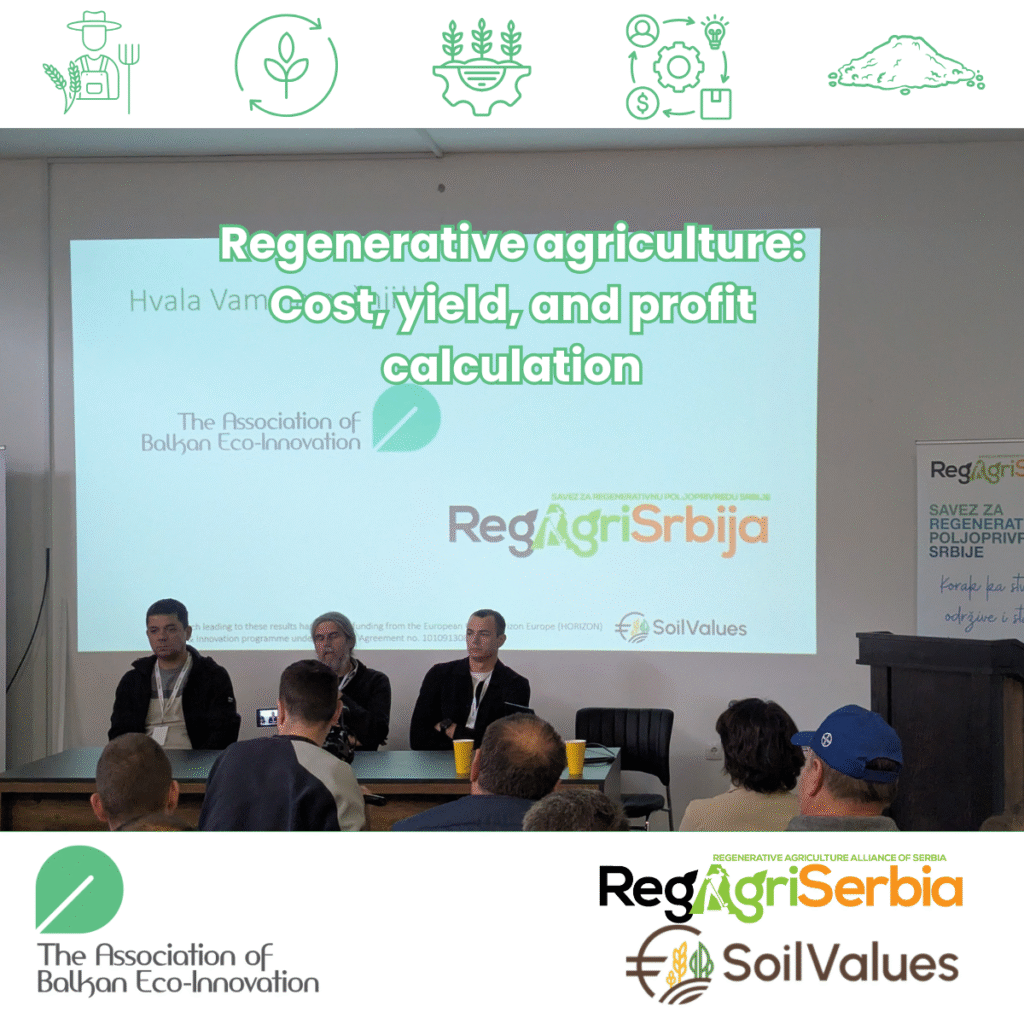The Association of Balkan Eco-Innovation (ABE), as the coordinator of the Regenerative Agriculture Alliance of Serbia, organized an event on May 16, 2025, titled: “Regenerative agriculture: Introducing new practices – Cost, yield, and profit calculation” at the CBC Cluster in Sombor.
The event brought together farmers, agricultural advisors, and institutional representatives to explore one essential question:
“How much will the transition to regenerative agriculture cost me?”
This was an opportunity to assess the economic viability of transitioning to regenerative agriculture, through real-life experiences and data from Serbian farms.
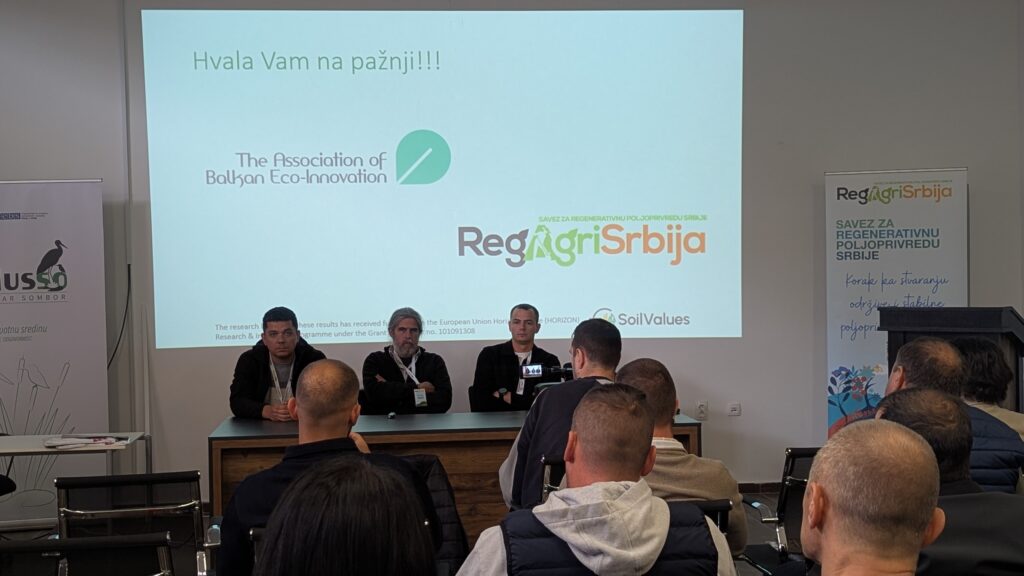
Regenerative agriculture from the perspective of Teodor Baloš
Teodor Baloš, a regenerative farmer from Torak and director of the Narcis cooperative, shared his transition journey from conventional to regenerative crop and vegetable production on 85 hectares.
Facing declining humus content and a labor shortage, Teodor adopted regenerative practices in 2021, aiming to restore soil health, increase organic matter, and improve climate resilience. His practices include cover cropping and strip-till methods.
He presented a side-by-side comparison between traditional and regenerative systems, showing:
- 3x less fuel used
- Significantly reduced working hours
- Similar annual costs, but with improved labor efficiency
His key insight: regenerative systems can be just as cost-effective while offering long-term benefits.
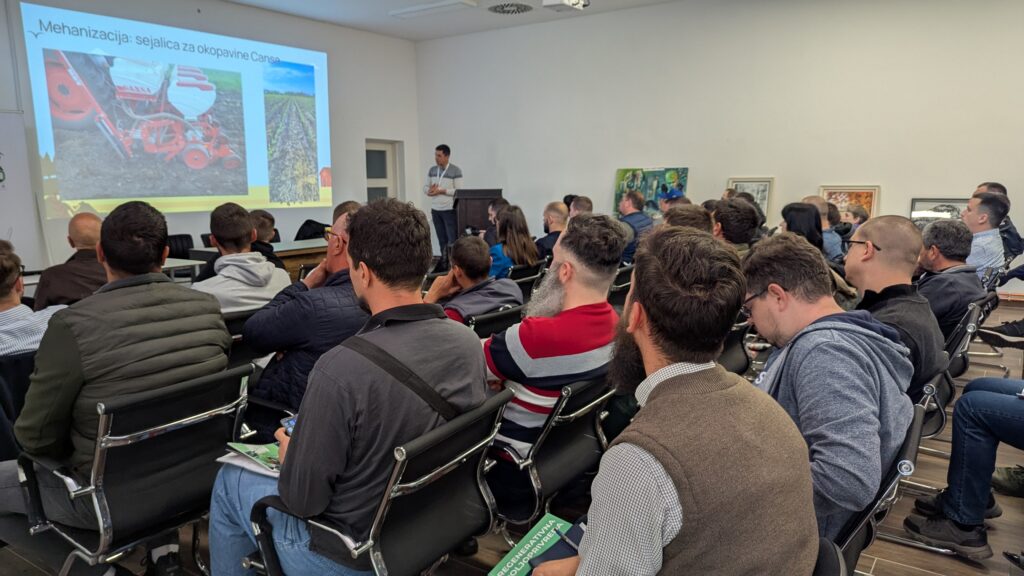
Insights from Ivan Sudarević
Ivan Sudarević, a farmer from Subotica, manages 200 hectares with his family. After moving from conventional to conservation and then to regenerative farming, Ivan reported:
- Stable production despite labor shortages
- 40–60% fuel savings
- Visible soil improvement (earthworms, organic matter
- Consistent yields in line with top local producers
He also mentioned that he has faced some challenges:
- Lack of knowledge and experience
- Peer pressure and skepticism
- Inadequate equipment and logistics
- Mistakes during the transition
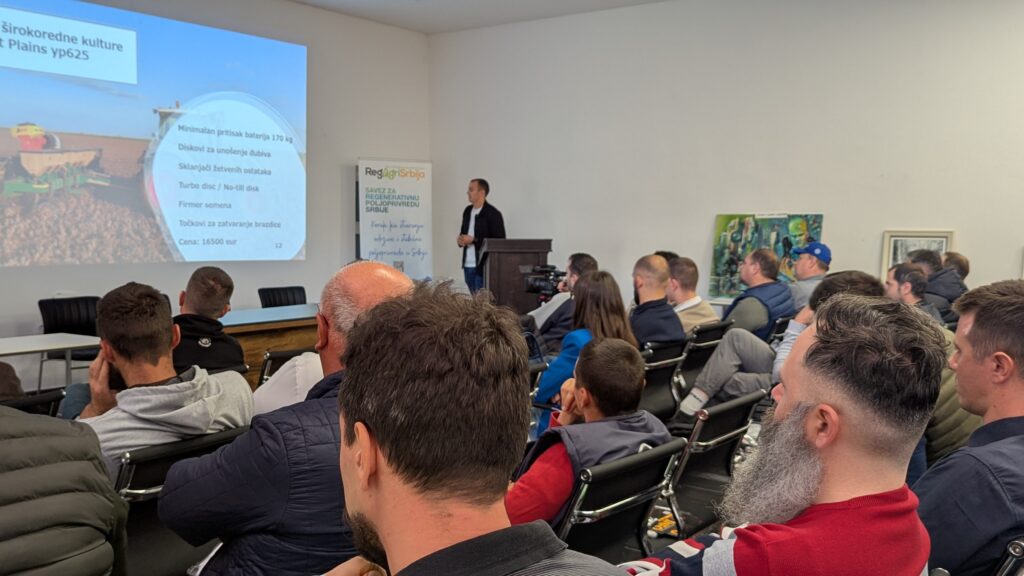
Florian Farkaš on balancing profit and soil health
Florian Farkaš, a regenerative farmer and advisor from Bajmok, grows vegetables, grains, and soybeans. He switched to regenerative methods when he noticed declining organic matter due to intensive farming.
Between 2018 and 2023, his focus was on identifying the most suitable regenerative system for his farm. He shared real financial data (excluding land lease and subsidies), noting:
- Impact of COVID-19 and rising input prices
- Disparity between input costs and crop prices (especially in 2022–2023)
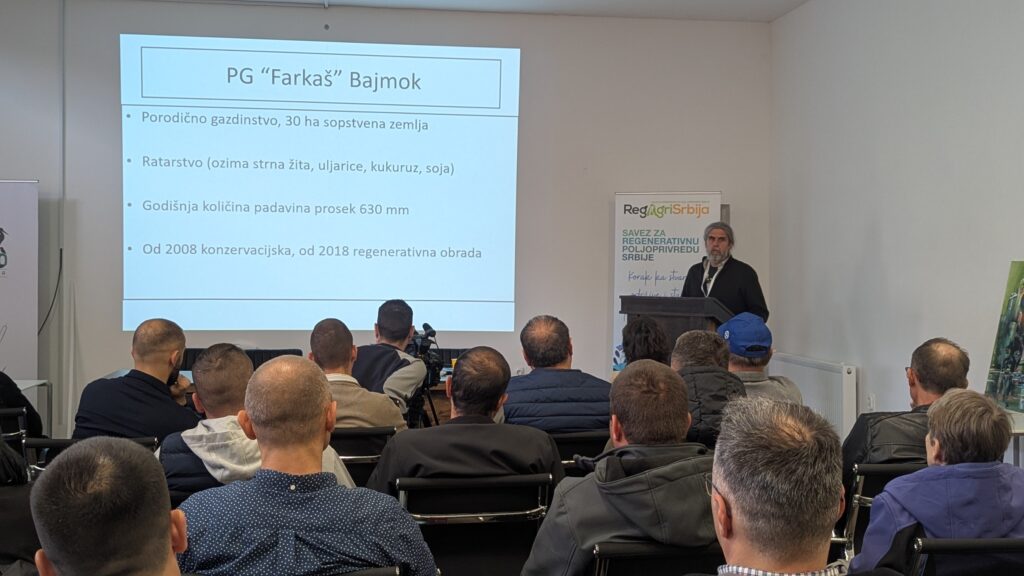
Farmers’ most asked questions
The event ended with an open discussion around common dilemmas when switching to regenerative farming, including:
- Why conduct a detailed soil lab analysis before starting?
- What criteria help select the best plots for transition?
- What should be the first steps in soil preparation?
- How can existing seeding equipment be adapted?
- How to manage risk and maintain consistent yields?
- What’s the long-term return on investing in healthier soils?
Learn more about regenerative farming and upcoming events at: Regenerative agriculture alliance of Serbia
The event was supported by the European Union under the SoilValues project.
